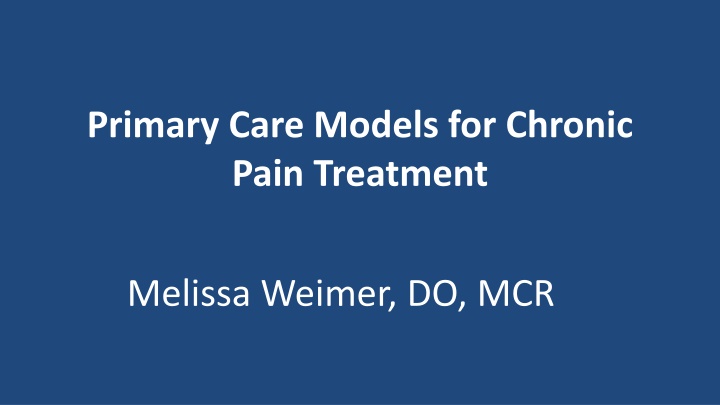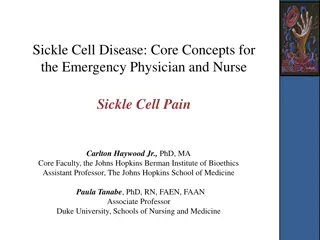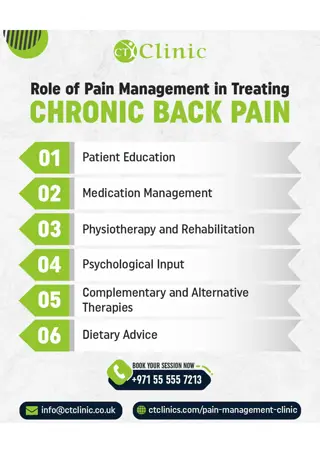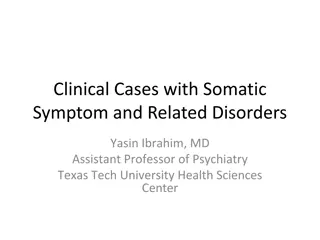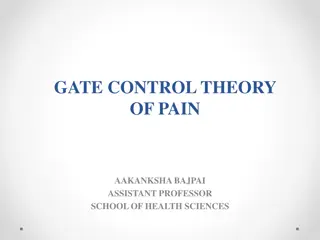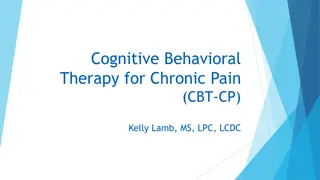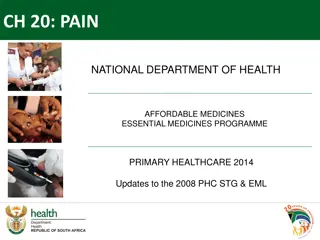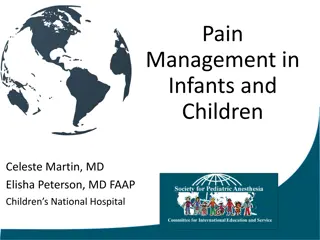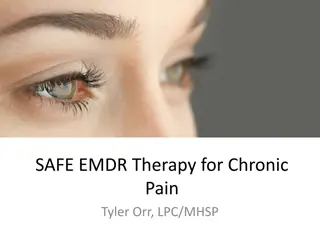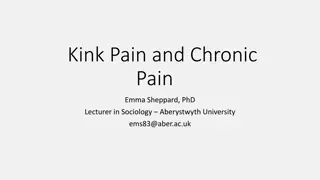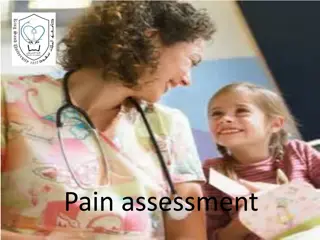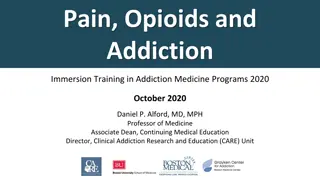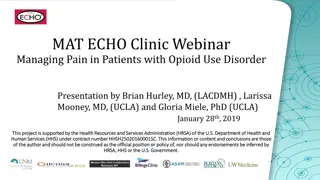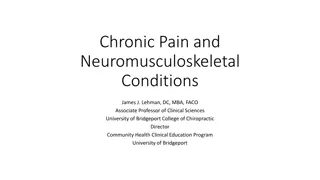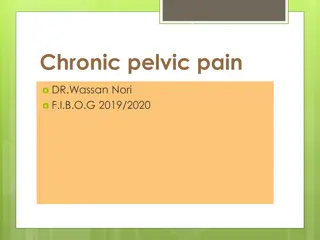Primary Care Models for Chronic Pain Treatment
Addressing chronic pain requires a comprehensive approach that involves a team of healthcare professionals. Key elements include shared clinic policies, emphasis on functional gains, multimodal treatment, and addressing substance use disorders. Integrated programs and strategies like clinical decision support tools, nurse care management, and opioid reassessment clinics play a vital role in managing patients with chronic pain. This case study highlights the complexities of managing chronic pain in a patient with a history of migraine headaches and opioid use disorder.
Download Presentation

Please find below an Image/Link to download the presentation.
The content on the website is provided AS IS for your information and personal use only. It may not be sold, licensed, or shared on other websites without obtaining consent from the author.If you encounter any issues during the download, it is possible that the publisher has removed the file from their server.
You are allowed to download the files provided on this website for personal or commercial use, subject to the condition that they are used lawfully. All files are the property of their respective owners.
The content on the website is provided AS IS for your information and personal use only. It may not be sold, licensed, or shared on other websites without obtaining consent from the author.
E N D
Presentation Transcript
Primary Care Models for Chronic Pain Treatment Melissa Weimer, DO, MCR
Disclosures Dr. Weimer is a consultant for INFORMed, IMPACT education, and the American Association of Addiction Psychiatry. Dr. Weimer is the medical director of CODA, Inc.
Examples of Integrated Programs Boston Medical Center TOPCARE (Transforming Opioid Prescribing in Primary Care) Clinical decision support tool (www.mytopcare.org) Nurse care management Electronic registry Oregon Health & Science University PROPEL clinic Pain/Addiction trained internist who sees patients in consultation SW and MA with additional addiction and pain training Resident teaching
Examples of Integrated Programs Central City Concern, Portland, OR Add RACHEL info here VA Connecticut Health Care System Opioid Reassessment Clinic Pain and addiction trained internist Advanced practice nurse Psychiatry Clinical health psychologist
Key Elements Team approach with pain champion(s) Shared clinic policies and assessment tools Consensus for a pain standard of care Focus on functional gains Address opioid safety and efficacy Defined referral process Emphasis on a Multimodal treatment approach Address substance use disorders and have referral options Longer visits After visit care with Case or Care managers
Other ideas E-consults Web-based programs/pain treatments Project ECHO Telemedicine
Case 43 yo female with long history of migraine headaches, high health care utilization, depression, anxiety, sexual abuse as a child, and domestic violence as an adult. Sought outpatient treatment for opioid use disorder 6 months ago but never stopped using acetaminophen/hydrocodone. Currently maintained on daily acetaminophen/hydrocodone and nortriptyline. Continues to have daily, debilitating migraines. Spends most of her day in bed. States that she is unable to stop or cut back on opioids despite trying a few times. Increased depression, mental instability when she stops opioids. Frequently obtains opioids from friends. Her husband is concerned about her use. Oregon Prescription Drug monitoring program (PDMP) shows 3 dental prescribers, 3 physician prescribers, and >4 pharmacies.
